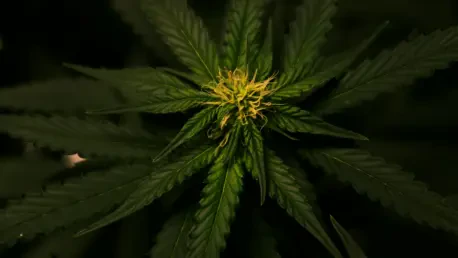Cannabis, once dismissed as a menace, is now being widely considered for its potential therapeutic benefits. However, the advancement of cannabis research has been significantly impeded by the U.S. Drug Enforcement Administration’s (DEA) rigorous control over its production for study purposes. By enforcing stringent quotas under the guise of safeguarding the public from the mishandling of controlled substances, the DEA has inadvertently hampered groundbreaking research initiatives, leaving many questions about cannabis’s medicinal capabilities unanswered. This article delves into the core of these regulatory challenges and gestures towards a necessary transformation of the current system for the sake of scientific progress.
Dissecting the DEA’s Restrictive Quota System
Impact on Clinical Exploration and Innovation
The DEA has long maintained a quota system regulating the production of Schedule I and II substances, with cannabis falling squarely into this classification. Despite legalization at state levels, the federal designation of cannabis as having “no accepted medical use” obstructs the pathway for comprehensive research. Researchers seeking to understand the full medical potential of cannabis face consistent hurdles due to the DEA’s tight production controls. This oversight, intended to prevent substance misuse, instead stifles legitimate research, with quotas often set at inexplicably low levels, exacerbating the situation.
Clinical trials, which require precise quantities and strains for valid results, frequently encounter delays or cancellations when the necessary cannabis supply is unavailable. The scarcity hampers not only academic exploration but also the potential for discovering novel therapies that could benefit countless patients with conditions such as epilepsy, PTSD, and chronic pain. The roadblock posed by DEA quotas has long been a point of contention within the scientific community, which continues to lobby for a more balanced approach that neither compromises regulation nor stunts scientific inquiry.
The Decades-Long Monopoly and Its Consequences
For decades, the University of Mississippi held the monopoly as the sole institution federally authorized to grow cannabis for research. This exclusivity often led to products of debatable consistency, with researchers lamenting the lack of variety in cannabis strains. Despite increasing demands from researchers for more reliable and varied specimens, the DEA historically resisted licensing additional growers. It wasn’t until a confluence of legal pressures and congressional inquiries arose that the DEA began revisiting its stance, opening the floor to potential new players albeit very slowly.
Even as the monopoly showed signs of fracturing, the repercussions of past inaction remain apparent today. Many prospective producers are still navigating a lengthy approval process, caught up in bureaucratic red tape that impairs their ability to bring high-quality, genetically diverse cannabis to the research sphere. This bottleneck has created a cycle where researchers are compelled to either compromise on their study’s scope or postpone their projects indefinitely, thereby stunting advancements that could yield crucial findings.
The Global Perspective and the Path Forward
Comparative Analysis with International Policies
Globally, the United States lags behind its peers in cannabis research due to a confluence of regulatory barriers. Countries like Israel and Canada have made significant strides, having realized the importance of flexible research frameworks and governmental backing. These nations have instituted structured systems that encourage exploration in both therapeutic and medical spectrums, thereby positioning themselves ahead in pharmaceutical innovation. By comparison, the restrictive DEA quotas in the United States render it a less competitive player on the international stage, leaving groundbreaking insights potentially undiscovered.
Other nations, recognizing the burgeoning interest in cannabis’s potential, have enacted policies that not only support research but also cultivate industry growth—a tactic the United States could benefit from emulating. Drawing inspiration from these global success stories might prompt a reconsideration of the DEA’s stifling oversight, encouraging regulatory agency coordination in line with contemporary scientific inquiry. Modifying the current system could pave the way for unlocking cannabis’s full therapeutic potential, matching international efforts and fostering advancements that benefit both science and society.
Strategies for Overcoming Regulatory Challenges
Advocating for a major overhaul of the DEA’s quota management is gaining ground as a pressing necessity. The potential reclassification of cannabis from Schedule I to Schedule III has been a focal point of suggestion, promising to ease current restrictions and encourage more robust research efforts. In 2023, the Department of Health and Human Services proposed such a reclassification, though the DEA’s willingness to act remains uncertain. Nonetheless, streamlining the quota-setting process, increasing transparency, and involving independent oversight are crucial steps toward creating a more facilitative environment.
Beyond administrative changes, fostering collaboration between research entities and government agencies could bridge gaps and reduce the lag in study approvals. Establishing clear, consistent guidelines would not only benefit researchers but also gain public trust in ongoing and emergent cannabis investigations. Incremental reforms prioritized alongside outspoken advocacy and support from stakeholders could signal the beginning of sustained progress, reinforcing the importance of adaptive policies that align with scientific evolution.
A Call for Reform and Modernization
Cannabis, once viewed predominantly as a harmful substance, is increasingly recognized for its potential therapeutic benefits. Despite this growing recognition, research into cannabis’s medicinal properties has faced significant hurdles, primarily due to the strict regulatory oversight imposed by the U.S. Drug Enforcement Administration (DEA). The DEA has implemented rigorous controls on the production of cannabis for research purposes, enforcing strict quotas to purportedly protect the public from the potential abuse and mishandling of controlled substances. Unfortunately, these stringent regulations have resulted in an inadvertent stifling of groundbreaking scientific study. Many important questions about cannabis’s medical capabilities remain unanswered due to these regulatory constraints. This situation highlights the need for a reevaluation and possible transformation of the current system. Reforming these regulations is essential to enable scientific progress, allowing researchers to explore cannabis’s full medicinal potential for the benefit of public health and wellness.









